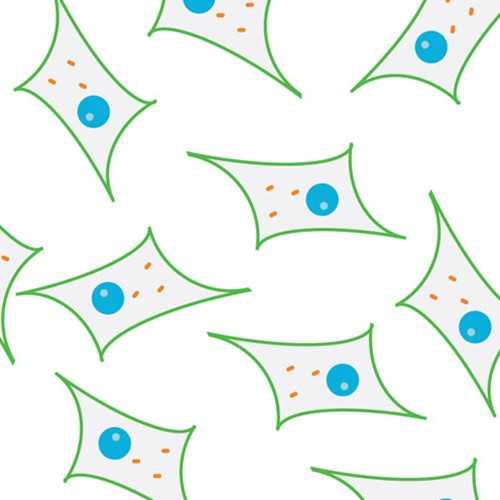Hamster Melanoma Cell Line (AbC1)
The AbC1 hamster melanoma line was established in 1986 from the transplantable amelanotic Bomirski melanoma in hamster that in vivo is characterized by an undifferentiated phenotype and high growth rate.
Highlights:
- Amelanotic when cultured in media low in precursors to melanin
- Produce melanin pigment when L-tyrosine or L-DOPA are added to the culture media - along with new organelle formation - melanosomes and increased expression of MSH receptors
- Express proopoiomelanocortin with production of neuropeptides including MSH, ACTH and β-endorphin
- Excellent model to study cell differentiation and attendant pathways
Amelanotic melanoma is a type of skin cancer in which the cells do not make melanin. They can be pink, red, purple or of normal skin color, hence difficult to recognise. It has an asymmetrical shape, and an irregular faintly pigmented border. This type of melanoma can be difficult to detect and ususally are well past stage I, which makes them more difficult to treat.
From the laboratory of Andrzej T. Slominski, MD, PhD, University of Alabama at Birmingham.
The AbC1 hamster melanoma line was established in 1986 from the transplantable amelanotic Bomirski melanoma in hamster that in vivo is characterized by an undifferentiated phenotype and high growth rate.
Highlights:
- Amelanotic when cultured in media low in precursors to melanin
- Produce melanin pigment when L-tyrosine or L-DOPA are added to the culture media - along with new organelle formation - melanosomes and increased expression of MSH receptors
- Express proopoiomelanocortin with production of neuropeptides including MSH, ACTH and β-endorphin
- Excellent model to study cell differentiation and attendant pathways
Amelanotic melanoma is a type of skin cancer in which the cells do not make melanin. They can be pink, red, purple or of normal skin color, hence difficult to recognise. It has an asymmetrical shape, and an irregular faintly pigmented border. This type of melanoma can be difficult to detect and ususally are well past stage I, which makes them more difficult to treat.
From the laboratory of Andrzej T. Slominski, MD, PhD, University of Alabama at Birmingham.
| Product Type: | Cell Line |
| Name: | AbC1 |
| Cell Type: | Melanoma |
| Organism: | Hamster |
| Source: | Skin |
| Growth Conditions: | Ham's F-10 media, 1% antibiotic and antimyotic, 5% FBS |
| Cryopreservation: | Media + 10% DMSO |
| Comments: | Cells can grow in Ham’s F10 medium plus either 5% or 10% serum to maintain amelanotic phenotype |
| Storage: | LN2 |
| Shipped: | Dry Ice |
- Slominski A, Moellmann G, Kuklinska E. MSH inhibits growth in a line of amelanotic hamster melanoma cells and induces increases in cyclic AMP levels and tyrosinase activity without inducing melanogenesis. J Cell Sci. 1989 Apr;92 ( Pt 4):551-9. PubMed PMID: 2557357.
- Slominski A, Moellmann G, Kuklinska E, Bomirski A, Pawelek J (1988) Positive regulation of melanin pigmentation by two key substrates of the melanogenic pathway: L-tyrosine and L-dopa. J Cell Sci 89, 287-296.
- Slominski A (1991). POMC gene expression in hamster and mouse melanoma cells. FEBS Lett 291, 165-168
If you publish research with this product, please let us know so we can cite your paper.


